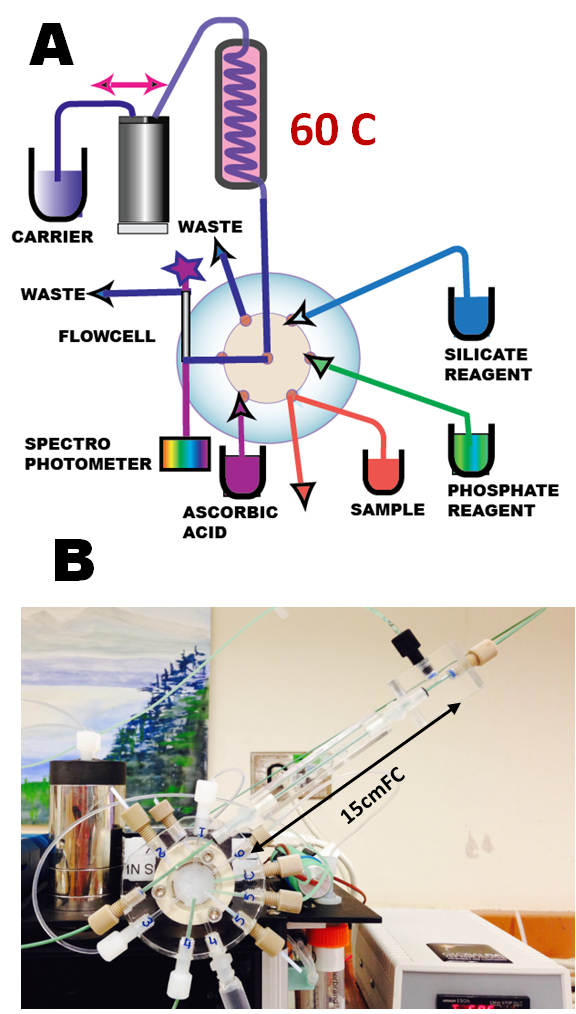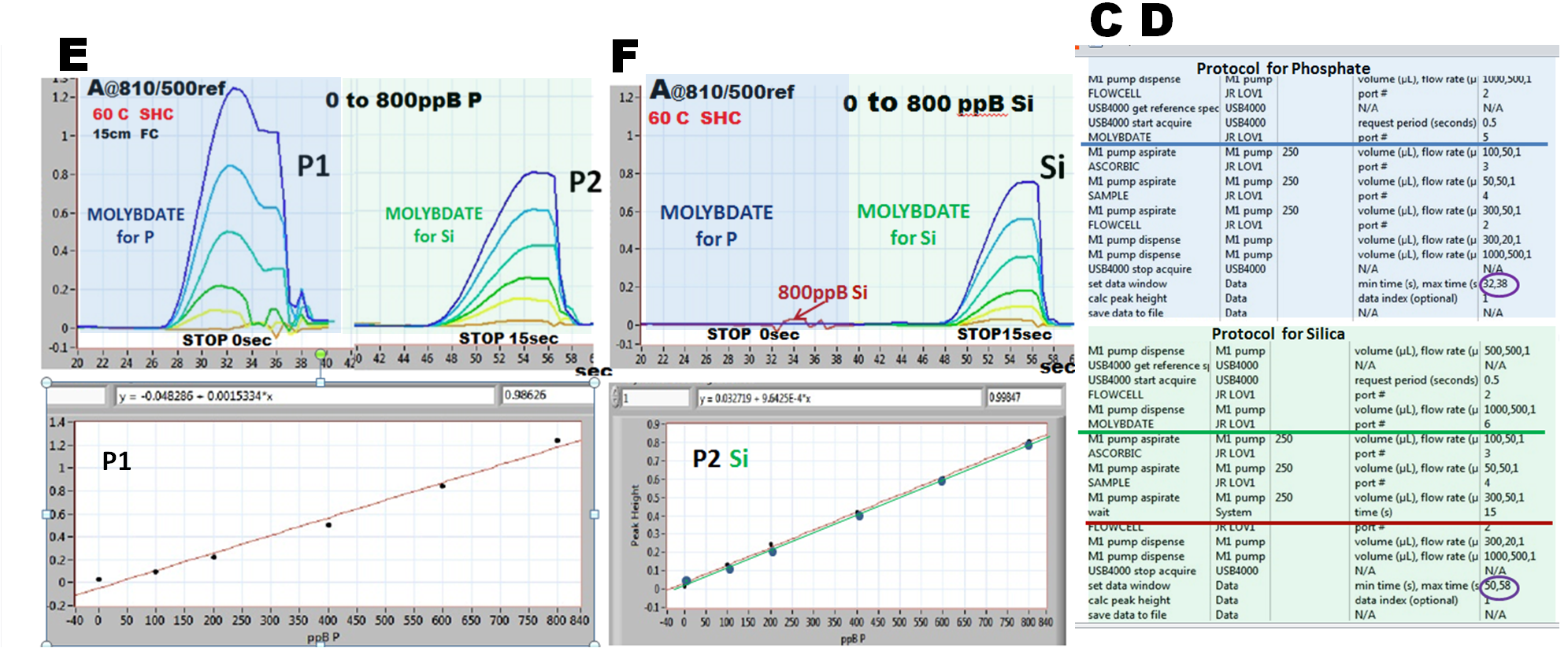Two analyte assay in the single line miniSIA-1 system (A), is carried out by execution of consecutive assay protocols, using a single line microSI instrument furnished with single miliGAT pump, LOV module and 15cm light path flowcell (B).
The phosphate colorimetry uses molybdate reagent prepared in 2 M sulphuric acid with Sb tartarate as a catalyst, while method for silicate uses molybdate reagent prepared in 0.3M sulphuric acid. In both cases ascorbic acid is used to reduce P and Si molybdate into a blue compound. In highly acid solution and presence of catalyst only phosphomolybdate blue is formed, at low acidity and absence of Sb catalyst both phosphomolybdate and silicomolybdate are formed.
The assay protocols for phosphate (C) and silicate (D) are identical except that:
- reagents for phosphate and silicate are aspirated from port 5 and port 6
- the silicate method includes 15 second stop flow period in HC
- data collection windows are adjusted to capture peak maximum
The sequence of calibration runs for phosphate (E) with phosphate reagent (blue shaded) and silicate reagent (green shaded) shows two groups of peaks P1 and P 2 that yield corresponding linear calibration graphs in the range of 0 to 800ppB P.
The sequence of calibration runs for silicate (F) with phosphate reagent (blue shaded) and silicate reagent (green shaded) shows only one group of peaks Si 2, since silicate does not react with phosphate reagent (800ppB Si standard, red trace corresponds to baseline signal). Note that by the choice of the stop flow time, and of the reaction temperature P2 and Si calibration lines obtained at these conditions are almost identical.
It follows that this approach is applicable to a wide range of reagent based assays, even if incompatible reagents are being used, because the carrier solution is DI water, which thoroughly flushes the entire flow path between consecutive assays.
Simultaneous Assay of P and Si
2.2.33.B.











